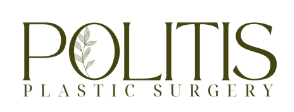Key Takeaways:
- Animation deformity occurs when breast implants move due to muscle contractions.
- Prevention techniques include dual plane placement and subfascial approaches.
- Personalized consultation helps determine the best approach for each patient.
Many patients with breast implants experience an issue known as animation deformity, where the implants visibly move during certain activities. This can be frustrating and affect your confidence. As a plastic surgeon in Tampa, FL, I frequently address this concern. Let’s explore what animation deformity is, why it happens, and how we can prevent it.
What Causes Animation Deformity?
Animation deformity occurs when breast implants shift or move due to the contraction of the pectoralis muscle. This movement can make the implants appear to move unnaturally, especially during activities that engage the chest muscles, such as exercise or lifting objects. It happens because the implants are placed under the pectoral muscle, which contracts and displaces the implants.
The Impact of Animation Deformity
While some might see this movement as a minor issue, for many, it can lead to dissatisfaction with the results of their breast augmentation. The unnatural movement can be noticeable and even uncomfortable, impacting your confidence and willingness to engage in certain activities.
Surgical Techniques to Minimize Animation
There are several surgical techniques that can help minimize the risk of animation deformity:
Dual Plane Placement: By placing the implant partially under the muscle (dual plane), we can reduce the movement caused by muscle contractions. This technique allows for a more natural appearance and minimizes the risk of animation deformity.
Subfascial Approach: This technique involves placing the implant above the muscle but beneath the fascia (the connective tissue layer). It provides support while avoiding direct contact with the muscle, thereby reducing movement.
Muscle-Sparing Procedures: These procedures focus on minimizing the disruption to the muscle during implant placement, which can help prevent animation deformity.
Use of Supportive Materials
In some cases, additional support can be provided by using acellular scaffolding or an internal bra. These materials act as a supportive matrix for the implant, helping to keep it in place and reduce unwanted movement.
Personalized Consultation
Every patient’s needs are unique, and the best approach to prevent animation deformity will depend on individual factors such as anatomy, lifestyle, and aesthetic goals. A personalized consultation allows us to assess your specific situation and recommend the most suitable techniques .
Finding the Right Solution
During a consultation, we will discuss your goals and concerns. Based on this discussion, we’ll recommend the best approach to achieve a natural, long-lasting result that minimizes the risk of animation deformity.
Our goal is to ensure you feel confident and satisfied with your breast augmentation results. By choosing the right surgical techniques and providing personalized care, we can help you achieve the look you desire while minimizing potential complications.
Conclusion
Animation deformity is a common concern for patients with breast implants, but with the right surgical techniques and supportive materials, it can be effectively managed. If you’re experiencing issues with implant movement or are considering breast augmentation, I invite you to schedule a consultation with me at Politis Plastic Surgery. Together, we can create a plan that meets your needs and ensures a beautiful, natural result.
If you have any questions or concerns, feel free to reach out to me at Politis Plastic Surgery. We’re here to support you through every step of your recovery.
To schedule a consultation with Dr. Effie Politis, please contact our office:
Call us at: (813) 542 – 2587
Visit us: 5016 West Cypress Street, Suite 200, Tampa, FL 33607
References:
- Politis Plastic Surgery. (n.d.). Breast Augmentation. Retrieved from https://politisplasticsurgery.com/breast/breast-augmentation/
- Spear, S. L., Parikh, P. M., Reisin, E., & Menon, N. G. (2004). Acellular Dermal Matrix-Assisted Breast Reconstruction. Retrieved from https://www.ncbi.nlm.nih.gov/pmc/articles/PMC6378247/
- Breastcancer.org. (n.d.). Dynamic Distortion in Breast Reconstruction. Retrieved from https://www.breastcancer.org/treatment/surgery/breast-reconstruction/corrective-reconstruction/dynamic-distortion
- RealSelf. (n.d.). How to Avoid Animation Deformity. Retrieved from https://www.realself.com/question/miami-fl-avoid-animation-deformity
- Garwood, E. R., Kumar, A., & Woo, K. (2019). Advanced Techniques in Breast Reconstruction. ScienceDirect. Retrieved from https://www.sciencedirect.com/science/article/abs/pii/S1748681519300920





